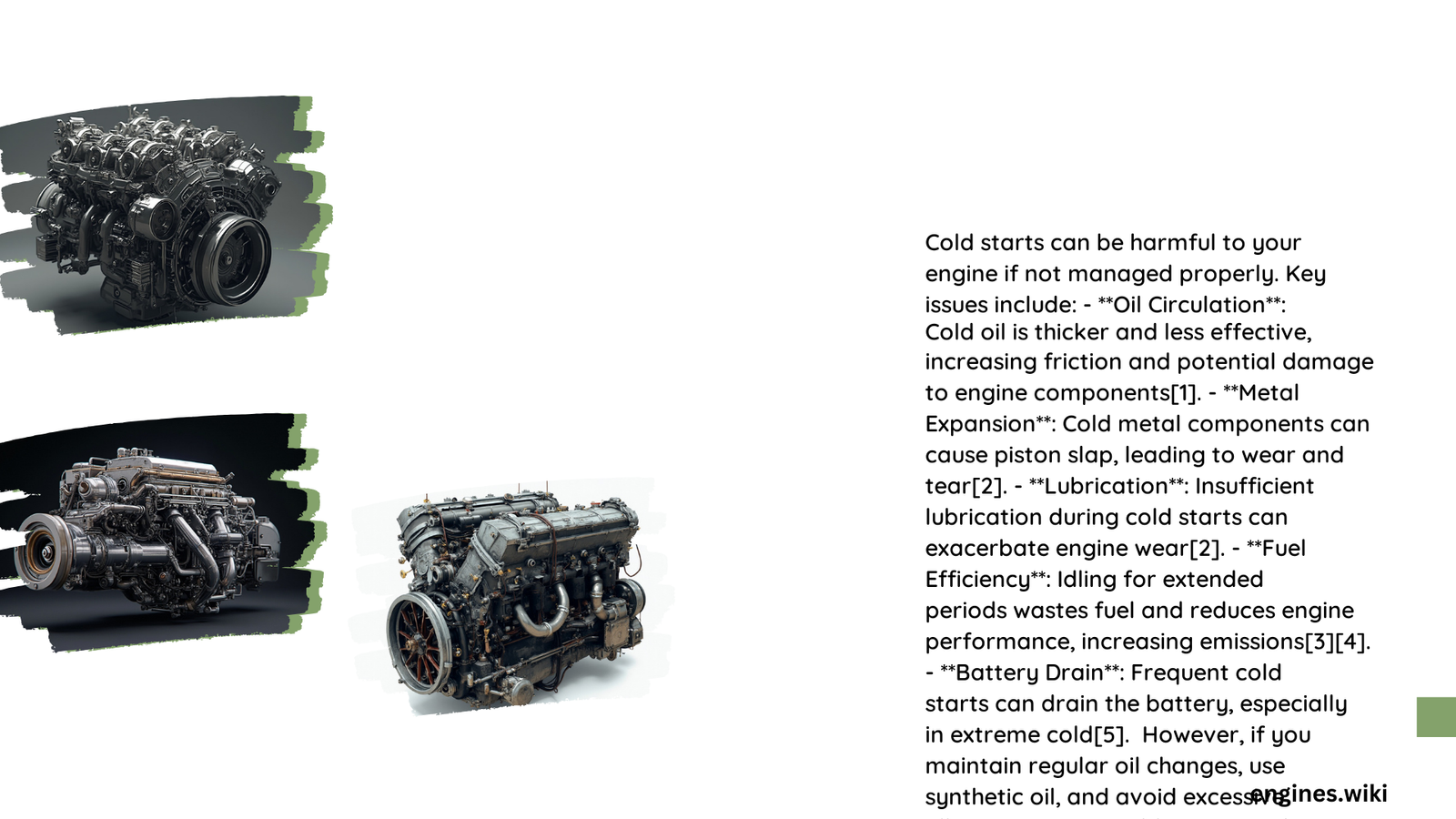Cold starts can significantly impact engine health, causing increased wear, reduced lubrication, and potential long-term damage. While modern engines are more resilient, understanding the mechanics of cold start stress is crucial for vehicle owners seeking to minimize engine wear and maintain optimal performance. This comprehensive guide explores the intricate relationship between cold starts and engine longevity, providing expert insights and practical prevention strategies.
What Happens During a Cold Start?
Cold starts represent a critical moment of stress for your vehicle’s engine. When you start a cold engine, several challenging conditions emerge:
How Does Temperature Affect Engine Components?
- Oil Viscosity Challenges
- Cold oil becomes thicker and slower to circulate
- Reduced lubrication leads to increased friction
-
Metal components experience more direct contact
-
Thermal Expansion Dynamics
| Component | Cold State | Warm State | Potential Stress |
|———–|————|————|—————–|
| Pistons | Contracted | Expanded | High friction |
| Cylinder Walls | Tight tolerance | Normal tolerance | Increased wear |
| Engine Oil | Thick | Thin | Reduced lubrication |
What Specific Damage Occurs During Cold Starts?
Mechanical Wear Mechanisms
- Increased Friction Points
- Cylinder wall scoring
- Accelerated piston ring wear
-
Premature bearing degradation
-
Fuel System Complications
- Incomplete fuel combustion
- Fuel dilution of engine oil
- Potential carbon deposit formation
Can You Prevent Cold Start Damage?

Strategies for Minimizing Engine Stress
- Proper Warm-Up Techniques
- Avoid extended idling
- Drive gently during initial minutes
-
Allow oil pressure to stabilize
-
Maintenance Best Practices
- Use correct viscosity oil
- Regular oil changes
- Consider synthetic oils for better cold performance
Technical Recommendations
- Oil Selection
- Choose multi-grade oils (e.g., 5W-30)
- Match oil to local climate conditions
- Follow manufacturer specifications
How Much Wear Actually Occurs?
While popular myths suggest 90% of engine wear happens during cold starts, realistic estimates indicate:
– Approximately 30-50% of cumulative wear occurs during initial engine start
– Modern engines have significantly improved cold-start resilience
– Proper maintenance can dramatically reduce potential damage
Expert Insights on Cold Start Management
Practical Tips for Engine Protection
- Start Procedure
- Turn key/start engine
- Wait 15-30 seconds before driving
-
Drive gently until temperature stabilizes
-
Winter Preparation
- Use block heaters in extreme cold
- Park in sheltered areas
- Consider garage storage
Conclusion: Balancing Awareness and Action
Cold starts represent an inevitable stress on your engine, but informed practices can substantially mitigate potential damage. Understanding the mechanics, implementing preventive strategies, and maintaining your vehicle conscientiously will help ensure long-term engine health.
Technical Complexity vs. Practical Solutions
The key is not to fear cold starts but to approach them with knowledge and care. Modern engineering has made engines more robust, but your maintenance habits remain crucial.
Final Recommendations
- Regular servicing
- Gentle driving during warm-up
- Quality oil selection
- Proactive maintenance
Reference:
– SAE International Cold Start Research
– Engine Engineering Journal
– Automotive Maintenance Guidelines
